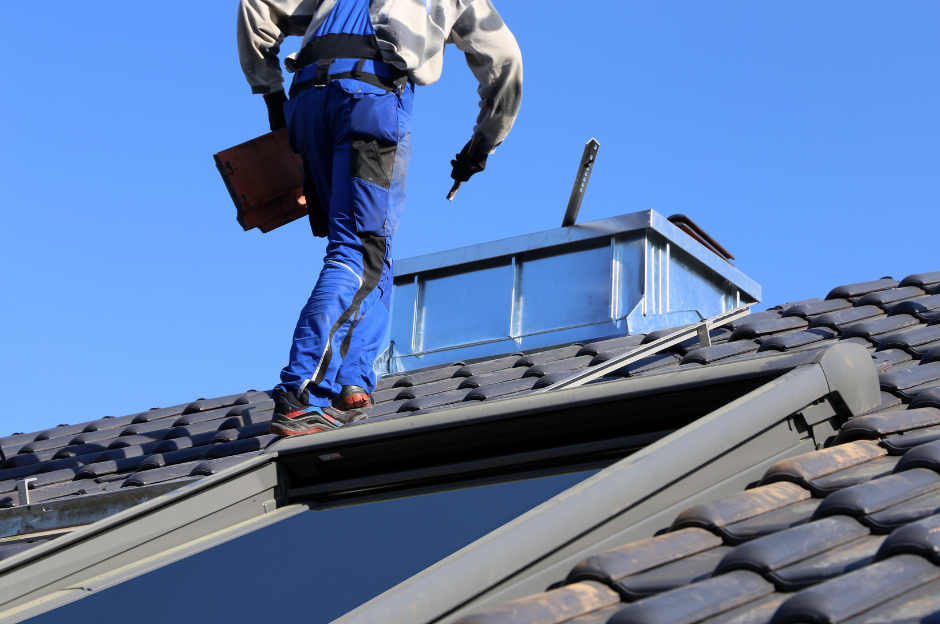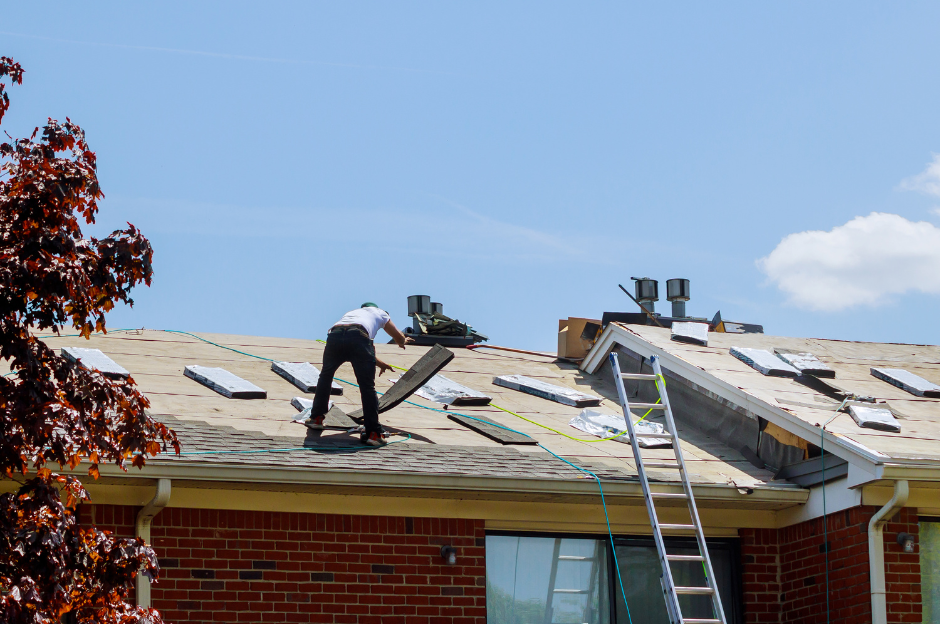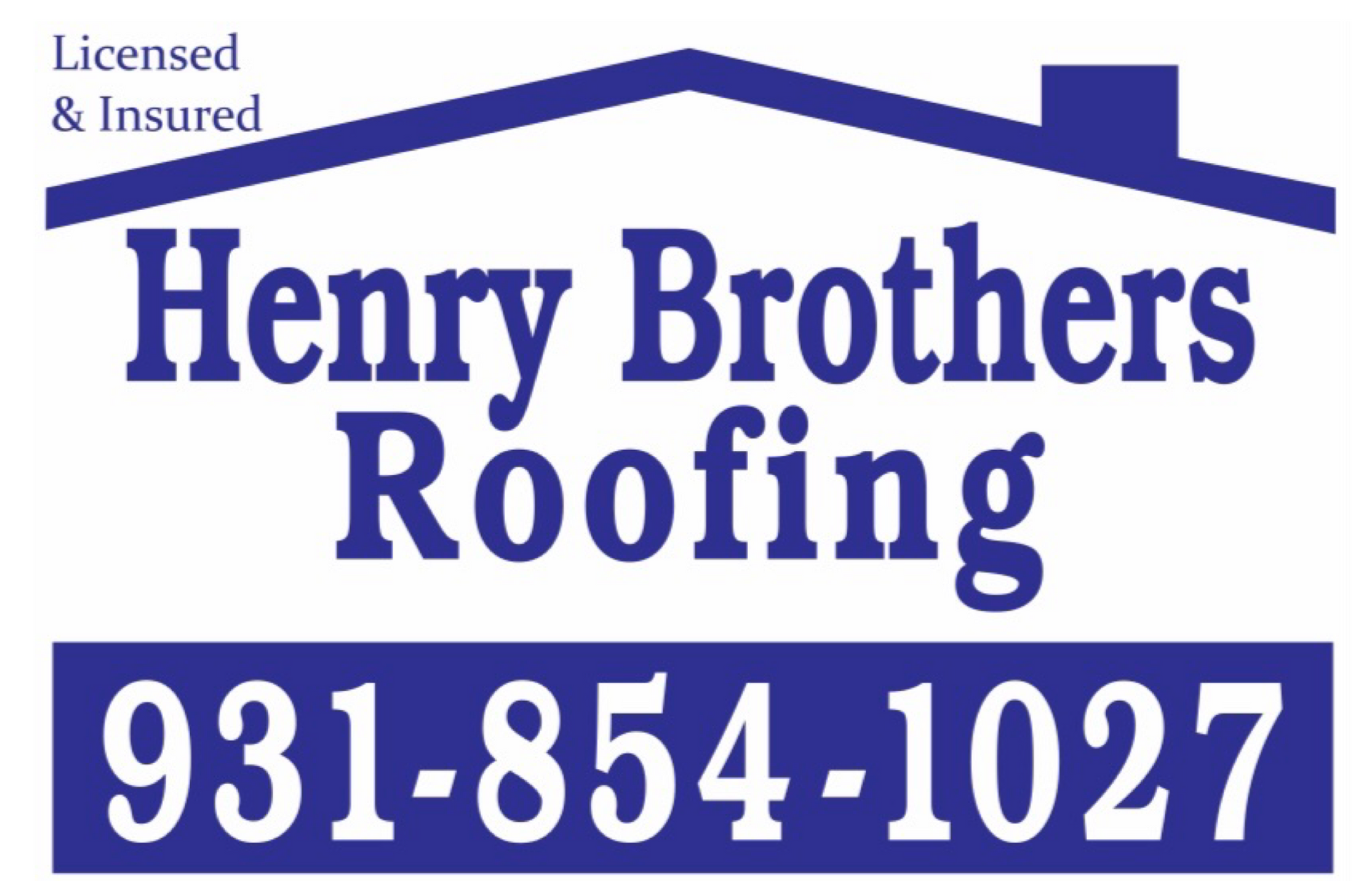Roofing Solutions for Historic Homes: Preserving the Past, Securing the Future
May 17, 2024

Historic homes are treasures that offer a glimpse into our architectural past, embodying the craftsmanship, style, and character of bygone eras. However, maintaining and restoring these structures comes with unique challenges, particularly when it comes to roofing. The roof is one of the most critical components of any home, providing protection from the elements and contributing significantly to the overall aesthetic. For historic homes, finding the right roofing solutions is essential to preserving their historical integrity while ensuring modern-day durability and efficiency. This blog post will explore various roofing solutions for historic homes, highlighting the importance of balancing preservation with innovation.
Understanding the Importance of Historic Roofing
The roof of a historic home is more than just a protective covering; it is an integral part of the home’s architectural identity. Different periods and styles of historic homes have distinct roofing materials and designs that contribute to their unique character. Preserving these elements is crucial for maintaining the historical significance and value of the property.
Key considerations for historic roofing include:
Architectural Authenticity: The roof should reflect the original design and materials used when the home was built.
Historical Accuracy: Maintaining the historical accuracy of roofing materials and techniques is essential for preserving the home’s authenticity.
Structural Integrity: Ensuring the roof provides adequate protection and support for the structure is vital for the home’s longevity.
Modern Standards: Incorporating modern standards of durability, energy efficiency, and safety without compromising historical integrity.
Balancing these considerations requires careful planning, knowledge of historical roofing techniques, and access to appropriate materials.
Common Roofing Materials for Historic Homes
Different eras and architectural styles used various roofing materials. Understanding these materials and their modern equivalents can help in making informed decisions for restoration or replacement. Here are some common roofing materials found in historic homes:
1. Slate
Historical Use: Slate has been a popular roofing material for centuries, known for its durability, fire resistance, and natural beauty. It was commonly used in Gothic, Victorian, and Colonial Revival styles.
Modern Solutions: While natural slate is still available, synthetic slate options provide a lighter and more cost-effective alternative. Synthetic slate mimics the appearance of natural slate while offering improved durability and ease of installation.
2. Wood Shingles and Shakes
Historical Use: Wood shingles and shakes were widely used in Colonial, Craftsman, and Cape Cod styles. Cedar was a common choice due to its natural resistance to rot and insects.
Modern Solutions: Today, wood shingles and shakes are still available, with options for pressure-treated or fire-retardant versions to meet modern safety standards. Alternatives like composite shingles can replicate the look of wood while offering enhanced durability and lower maintenance.
3. Clay and Terracotta Tiles
Historical Use: Clay and terracotta tiles are iconic in Spanish Colonial, Mission, and Mediterranean styles. These tiles are prized for their longevity, fire resistance, and distinctive appearance.
Modern Solutions: Modern clay tiles maintain the traditional look while incorporating advancements in manufacturing for better consistency and durability. Lightweight concrete tiles that mimic clay can also be an option, reducing structural load.
4. Metal Roofing
Historical Use: Metal roofing, including tin, copper, and zinc, has been used in various styles such as Victorian and Federal. Metal roofs are valued for their durability and the patina they develop over time.
Modern Solutions: Contemporary metal roofing options include standing seam metal roofs and metal shingles designed to resemble traditional materials. Coatings and treatments can enhance their longevity and energy efficiency.
5. Asphalt Shingles
Historical Use: Although more modern, asphalt shingles became popular in the early 20th century for their affordability and ease of installation. They are found in many mid-century homes.
Modern Solutions: Advanced asphalt shingles now offer improved durability, weather resistance, and a variety of styles and colors that can mimic the appearance of more traditional materials.
Preservation Techniques and Modern Innovations
Preserving the historical integrity of a home’s roof while incorporating modern advancements requires a careful blend of techniques and innovations. Here are some strategies to achieve this balance:
1. Conducting a Historical Assessment
Before undertaking any roofing project on a historic home, it’s essential to conduct a thorough historical assessment. This involves:
Researching Original Materials: Understanding the original roofing materials and techniques used when the home was built.
Assessing Current Condition: Evaluating the existing roof’s condition to identify areas of deterioration, damage, or previous repairs.
Consulting Historical Records: Reviewing historical records, photographs, and architectural plans to gather detailed information about the original roof.
A historical assessment provides a foundation for making informed decisions about restoration or replacement.
2. Sourcing Authentic Materials
Using authentic materials or close replicas is crucial for maintaining the historical integrity of a home’s roof. This may involve:
Reclaimed Materials: Sourcing reclaimed or salvaged materials that match the original roofing. This is particularly useful for materials like slate or clay tiles.
Custom Fabrication: Working with manufacturers who specialize in producing historically accurate roofing materials.
Synthetic Alternatives: Choosing high-quality synthetic alternatives that mimic the appearance and texture of traditional materials while offering modern benefits.
3. Employing Traditional Techniques
Restoring a historic roof often requires employing traditional techniques to maintain authenticity. Skilled craftsmen with experience in historic preservation can:
Replicate Original Methods: Use traditional methods such as hand-splitting shakes or custom-forming metal roofing panels.
Integrate Modern Practices: Incorporate modern practices discreetly to enhance durability and performance without compromising historical accuracy.
4. Enhancing Structural Support
Historic homes may require additional structural support to accommodate modern roofing materials or meet current building codes. This can involve:
Reinforcing Roof Framing: Strengthening the roof framing to support heavier materials or improve structural integrity.
Improving Insulation: Adding insulation to enhance energy efficiency while maintaining the roof’s historical profile.
Upgrading Underlayment: Using advanced underlayment materials that provide better moisture protection and breathability.
5. Utilizing Modern Technology
Modern technology can play a significant role in preserving and enhancing historic roofs. Some innovations include:
3D Scanning and Modeling: Using 3D scanning and modeling to create accurate representations of the roof’s original design and structure.
Energy-Efficient Solutions: Incorporating energy-efficient solutions such as cool roofing materials, solar panels designed to blend with historical aesthetics, or improved ventilation systems.
Protective Coatings: Applying protective coatings to materials like metal or wood to enhance their longevity and resistance to weathering.
Case Studies: Successful Historic Roofing Projects
Examining successful historic roofing projects can provide valuable insights and inspiration. Here are a few case studies that highlight the application of various roofing solutions:
1. The Gamble House, Pasadena, California
Background: The Gamble House, an iconic example of American Arts and Crafts architecture, required a roof restoration to preserve its historical integrity.
Solution: Reclaimed wood shingles were sourced to match the original roofing material. Traditional techniques were used to hand-split and install the shingles, ensuring an authentic appearance. Modern underlayment was added to enhance moisture protection without altering the exterior look.
Outcome: The restoration maintained the home’s historical character while providing improved durability and weather resistance.
2. The Biltmore Estate, Asheville, North Carolina
Background: The Biltmore Estate, a historic mansion built in the late 19th century, needed a roof replacement to address significant wear and tear.
Solution: Custom-fabricated slate tiles were used to replicate the original roof. The project incorporated modern techniques to reinforce the roof structure and improve insulation. Copper flashing and gutters were installed to enhance durability and historical accuracy.
Outcome: The new roof preserved the estate’s grandeur and historical significance while offering enhanced structural integrity and energy efficiency.
3. The Tenement Museum, New York City
Background: The Tenement Museum, housed in a historic 19th-century building, required a roof restoration to protect its exhibits and maintain its historical appearance.
Solution: A standing seam metal roof was chosen to replicate the original tin roofing. The metal panels were custom-formed to match the historical profile. Advanced coatings were applied to protect against corrosion and extend the roof’s lifespan.
Outcome: The project successfully preserved the building’s historical aesthetics and provided a durable, low-maintenance roofing solution.
Conclusion
Roofing solutions for historic homes require a delicate balance between preserving the past and securing the future. By understanding the importance of historical accuracy, sourcing authentic materials, employing traditional techniques, and integrating modern innovations, homeowners and preservationists can ensure that these architectural treasures are protected for generations to come.
Whether restoring a Gothic slate roof, replacing wood shingles on a Craftsman bungalow, or updating a Mediterranean tile roof, the goal is to honor the home’s historical significance while enhancing its durability and functionality. By carefully planning and executing roofing projects with attention to detail and respect for historical integrity, we can preserve the architectural heritage that defines our communities and enriches our cultural legacy.
Henry Brothers Blog

Multi-family buildings pose unique challenges for roofing—requiring durable, efficient, and cost-effective solutions that serve multiple households simultaneously. Selecting the right system and partner can significantly impact long-term maintenance and energy bills. Common Roofing Challenges in Multi-Family Properties Large surface areas Multiple penetrations (vents, HVAC units) Noise and disruption during installation High foot traffic for maintenance Energy efficiency Efficient Roofing Materials TPO (Thermoplastic Polyolefin): Lightweight, reflective, and energy-efficient. Ideal for flat or low-slope roofs. Modified Bitumen: Offers durability and weather resistance. Works well for larger structures. Metal Roofing: Long-lasting and low-maintenance. Higher upfront costs but excellent ROI. Asphalt Shingles: Budget-friendly and easy to repair. Better for pitched multi-family homes. Affordability Strategies Bulk Purchasing Discounts: Roofers often offer lower rates for large-scale projects. Energy Rebates and Tax Credits: Cool roofing materials may qualify for incentives. Roof Coatings: Extend lifespan and defer full replacements. Preventive Maintenance Plans: Regular inspections reduce major repair costs. Partnering with the Right Contractor Choose a roofing contractor experienced in multi-family dwellings. Look for: References from similar projects Warranty offerings Insurance and licensing Clear timelines and communication protocols

Your roof is one of the most defining features of your home’s architecture. A well-designed roof complements the style, era, and character of your house, enhancing both curb appeal and value. Whether you own a modern home, a Victorian masterpiece, or a Mediterranean villa, choosing the right roofing materials and design is essential. This article explores custom roofing solutions for different architectural styles, ensuring your roof is both aesthetic and functional. 1. Why Custom Roofing Matters A one-size-fits-all approach doesn’t work for roofing. Here's why customization is key: 🏡 Preserves Architectural Integrity The roof should match the home's era and design. A poorly chosen roof can clash with the architecture and reduce property value. 💰 Boosts Home Value & Curb Appeal A well-matched roof enhances visual appeal, making your home stand out. Homebuyers prefer houses with roofs that fit the overall design. 🌦 Enhances Durability & Efficiency Custom roofing accounts for climate, slope, and insulation. Choosing the right materials ensures longer roof life and energy efficiency. 2. Best Roofing Materials for Different Architectural Styles 🏗 Modern & Contemporary Homes Modern architecture focuses on clean lines, minimalism, and energy efficiency. Best Roofing Options: ✅ Flat Roofs – Achieve a sleek, contemporary look. ✅ Metal Roofing – Durable and complements modern aesthetics. ✅ Green Roofs – Eco-friendly and visually striking. ✅ Solar Panels – Integrate renewable energy solutions. 🏰 Victorian & Gothic Revival Homes These homes have steep-pitched roofs, turrets, and elaborate detailing. Best Roofing Options: ✅ Slate Tiles – Classic, long-lasting, and historically accurate. ✅ Wood Shingles – Adds charm and natural beauty. ✅ Decorative Metal Accents – Enhances ornate Victorian designs. 🏝 Mediterranean & Spanish-Style Homes Inspired by European coastal homes, these feature stucco walls and curved archways. Best Roofing Options: ✅ Clay or Terracotta Tiles – Traditional, weather-resistant, and elegant. ✅ Concrete Tiles – Durable and available in various textures and colors. ✅ Synthetic Spanish Tiles – Modern, lightweight alternatives with classic appeal. 🌲 Rustic & Cabin-Style Homes These homes emphasize natural materials and a cozy aesthetic. Best Roofing Options: ✅ Wood Shakes – Blends seamlessly with wooded surroundings. ✅ Metal Roofing (Rustic Finish) – Durable with a weathered, natural look. ✅ Green Roofs – Enhances sustainability and insulation. 🏡 Colonial & Traditional Homes These timeless homes focus on symmetry and classic proportions. Best Roofing Options: ✅ Asphalt Shingles – Affordable and available in classic shades. ✅ Slate Roofing – Elegant and historically accurate. ✅ Copper or Metal Accents – Enhances historic charm. 🏛 Mid-Century Modern Homes This style features low-sloped roofs, large windows, and open spaces. Best Roofing Options: ✅ Flat or Low-Slope Roofs – Clean, minimalistic aesthetic. ✅ Rubber or Membrane Roofing – Ideal for low-pitch roofs. ✅ Green or Living Roofs – Complements eco-conscious designs. 🏰 Tudor-Style Homes Tudor homes have steeply pitched gables and decorative half-timbering. Best Roofing Options: ✅ Wood or Synthetic Shake Shingles – Traditional and authentic. ✅ Slate Roofing – Enhances historic charm and durability. ✅ Architectural Asphalt Shingles – Mimics wood or slate at a lower cost. 3. Custom Roofing Features to Consider Beyond materials, adding customized elements can elevate your roof’s design. 🔹 Roof Color & Texture Dark roofs enhance historic and formal homes. Light-colored roofs reflect heat, ideal for warm climates. Textured materials (slate, shakes) add visual depth. 🏠 Roof Shape & Pitch Steep roofs fit Gothic and Victorian styles. Flat or low-sloped roofs match modern homes. Custom pitches enhance energy efficiency and durability. 🔆 Skylights & Roof Windows Adds natural light and enhances ventilation. Works well in modern, contemporary, and rustic homes. 🌞 Solar Roofing & Smart Technology Solar shingles blend seamlessly into modern & eco-friendly homes. Smart roofing systems adjust ventilation & insulation automatically. 4. Custom Roofing: How to Get Started 1️⃣ Consult a Roofing Expert Work with an architect or contractor specializing in custom roofs. Ensure they understand historical accuracy and climate considerations. 2️⃣ Choose High-Quality Materials Invest in durability, energy efficiency, and aesthetics. Select roofing that aligns with your home’s style and longevity needs. 3️⃣ Consider Long-Term Costs & ROI Some materials have higher upfront costs but last longer and increase home value. Energy-efficient options can reduce heating and cooling expenses. 4️⃣ Verify Local Building Codes Some roofing styles require special permits. Ensure compliance with HOA guidelines and historical district regulations.


